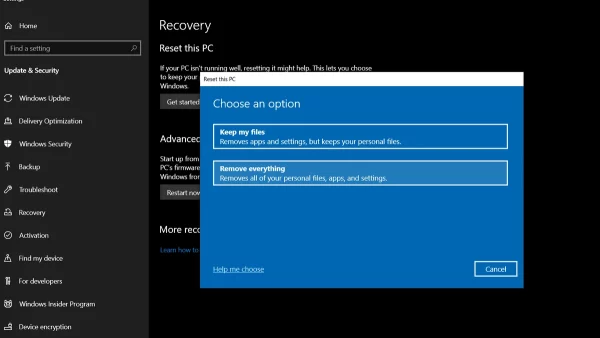How to Format a Desktop PC: Formatting a desktop PC involves erasing all the data on the hard drive and reinstalling the operating system. Before proceeding, ensure you have backed up all important data, as formatting will erase everything on the drive.
Note: The instructions may vary slightly depending on the operating system you are using.

Windows:
Backup Your Data:
- Backup your important data: Copy important files to an external drive or cloud storage.
Create Installation Media:
- Create Windows installation media:
- Download the Windows Media Creation Tool from the official Microsoft website.
- Run the tool and follow the instructions to create a bootable USB drive or DVD.
Boot from Installation Media:
- Insert the Installation Media:
- Insert the bootable USB drive or DVD into your computer.
- Access Boot Menu:
- Restart your computer and access the boot menu (usually by pressing a key like F2, F12, Esc, or Del during startup).
- Select the USB drive or DVD as the boot device.
Install Windows:
- Install Windows:
- Follow the on-screen instructions to install Windows.
- When prompted, select the option to format the hard drive during the installation process.
- Complete Setup:
- Complete the Windows setup process by following the prompts.
Install Drivers and Software:
- Install Drivers and Software:
- After Windows installation, install the necessary drivers for your hardware.
- Install essential software and updates.
macOS:
Backup Your Data:
- Backup your important data: Copy important files to an external drive or use Time Machine for a complete backup.
Reinstall macOS:
- Access macOS Utilities:
- Restart your Mac and hold down Command + R to enter macOS Utilities.
- Disk Utility:
- Select “Disk Utility” and choose the disk you want to format.
- Click “Erase” and select a file system (usually Mac OS Extended or APFS).
- Click “Erase” to format the disk.
- Reinstall macOS:
- Exit Disk Utility and choose “Reinstall macOS” from the Utilities menu.
- Follow the on-screen instructions to reinstall macOS.
- Complete Setup:
- Complete the macOS setup process.
Restore Data:
- Restore Data:
- If you use Time Machine, you can restore your data during the macOS setup process.
Linux:
- Backup Your Data:
- Copy important files to an external drive or cloud storage.
- Boot from Linux Installation Media:
- Insert a bootable Linux USB drive or DVD.
- Restart your computer and select the USB drive or DVD as the boot device.
- Install Linux:
- Follow the on-screen instructions to install Linux.
- During the installation, you can choose to format the hard drive.
- Complete Setup:
- Complete the Linux setup process.
- Install Software and Updates:
- Install necessary software and updates using the package manager.
Remember to consult the documentation for your specific operating system version for detailed instructions.
Visited 2 times, 1 visit(s) today
Was this article helpful?
YesNo
Last modified: December 6, 2023



